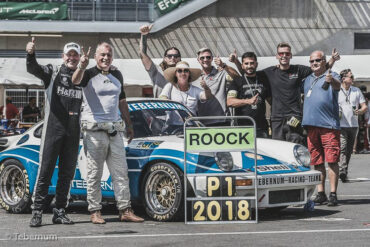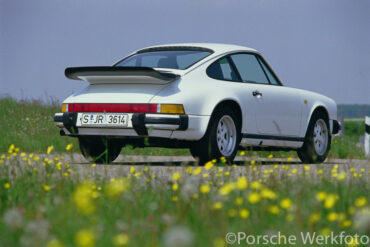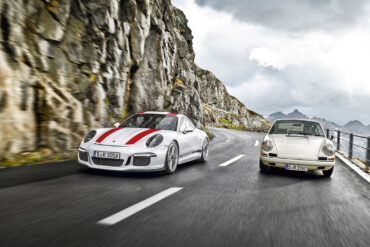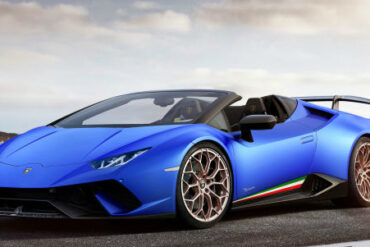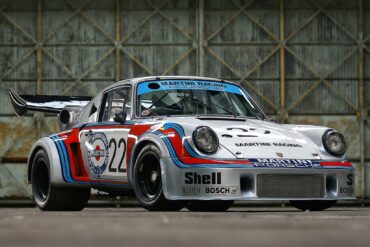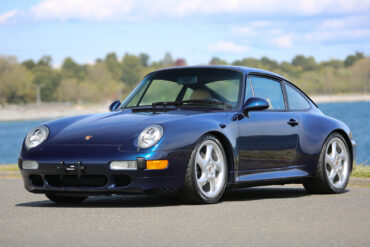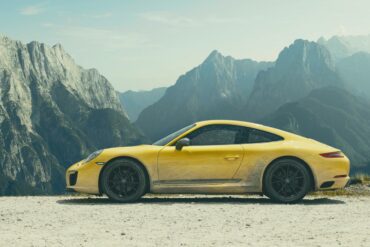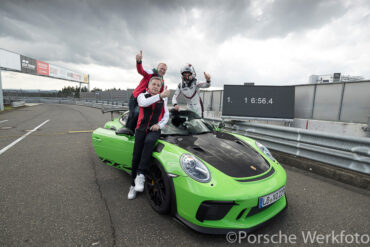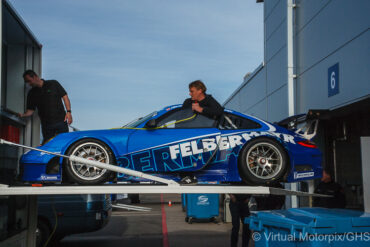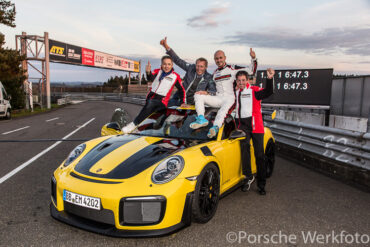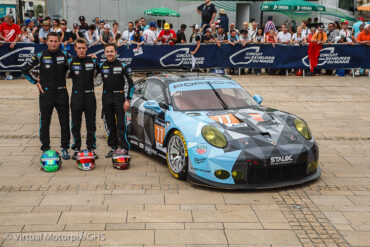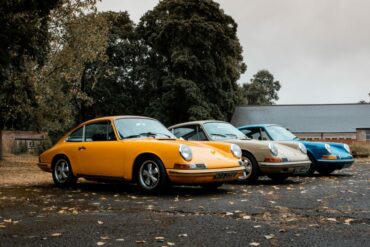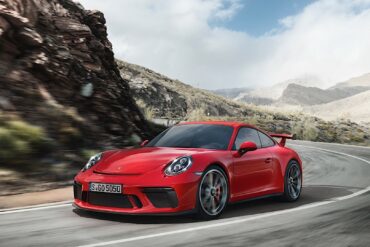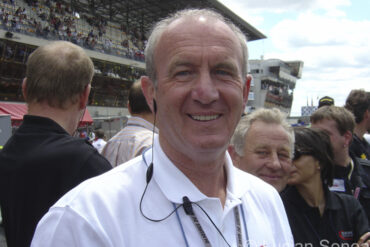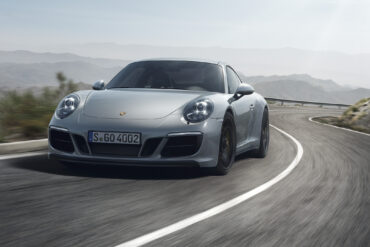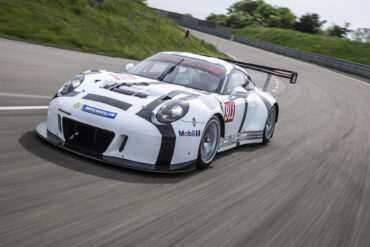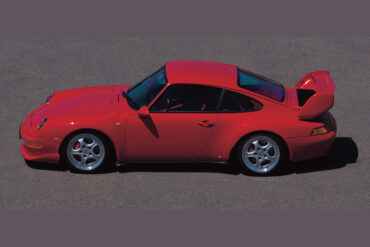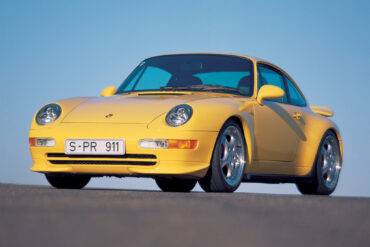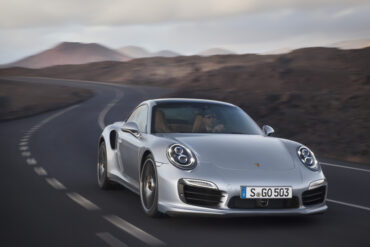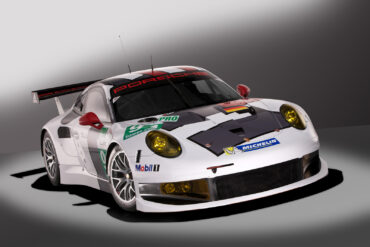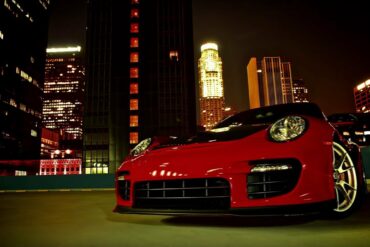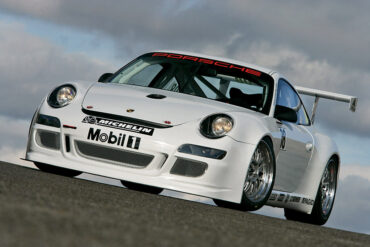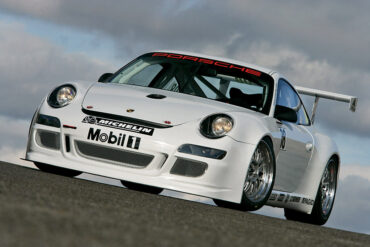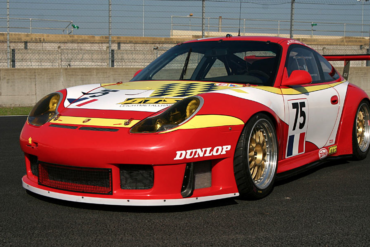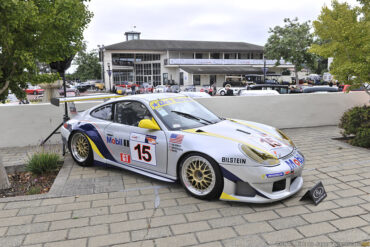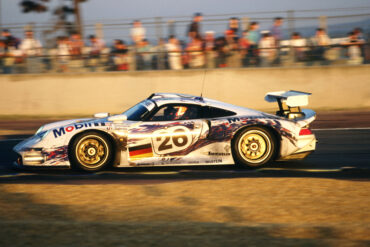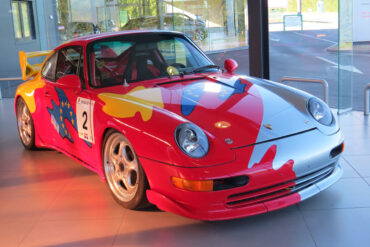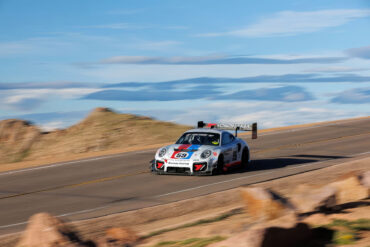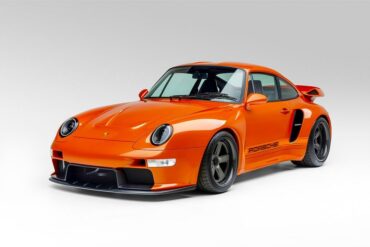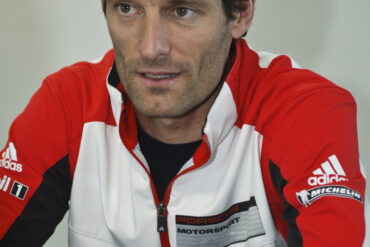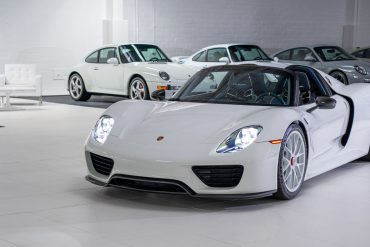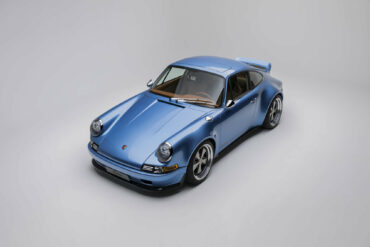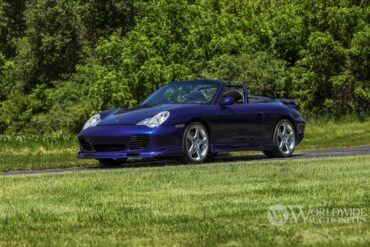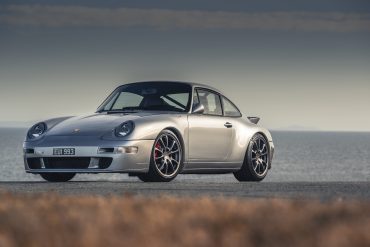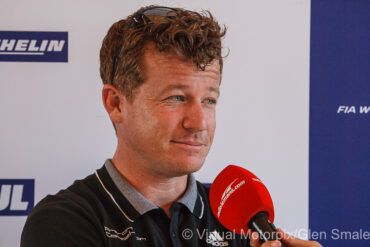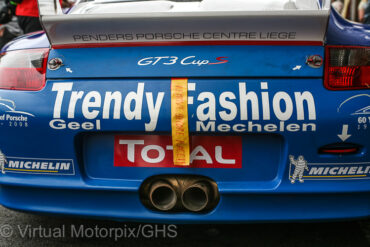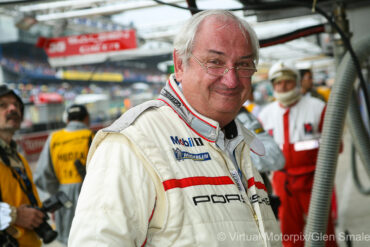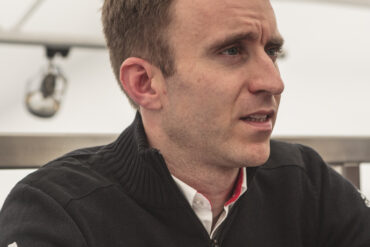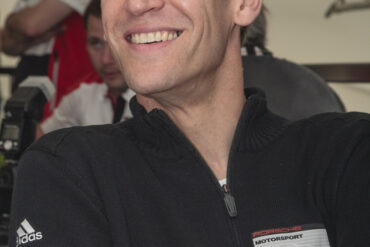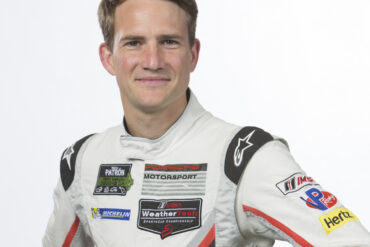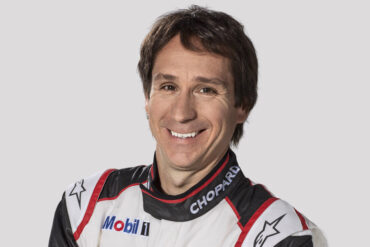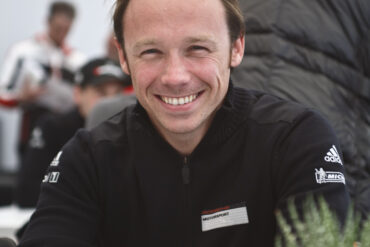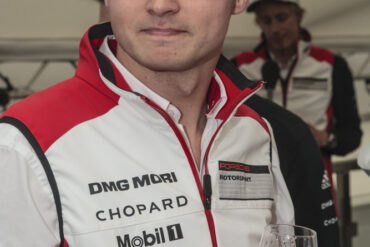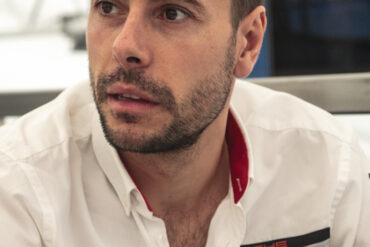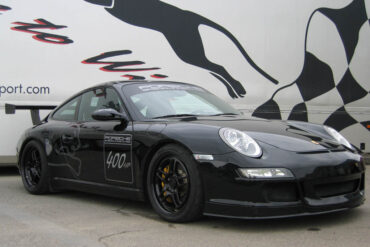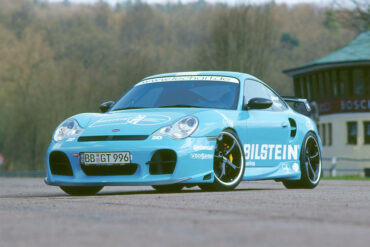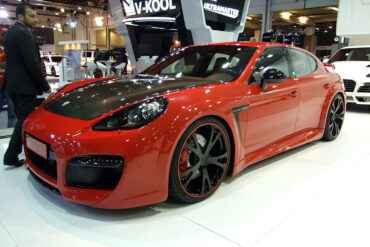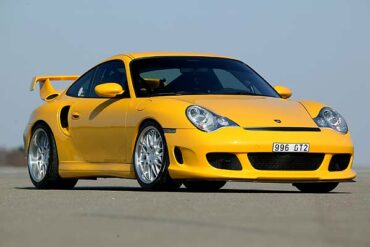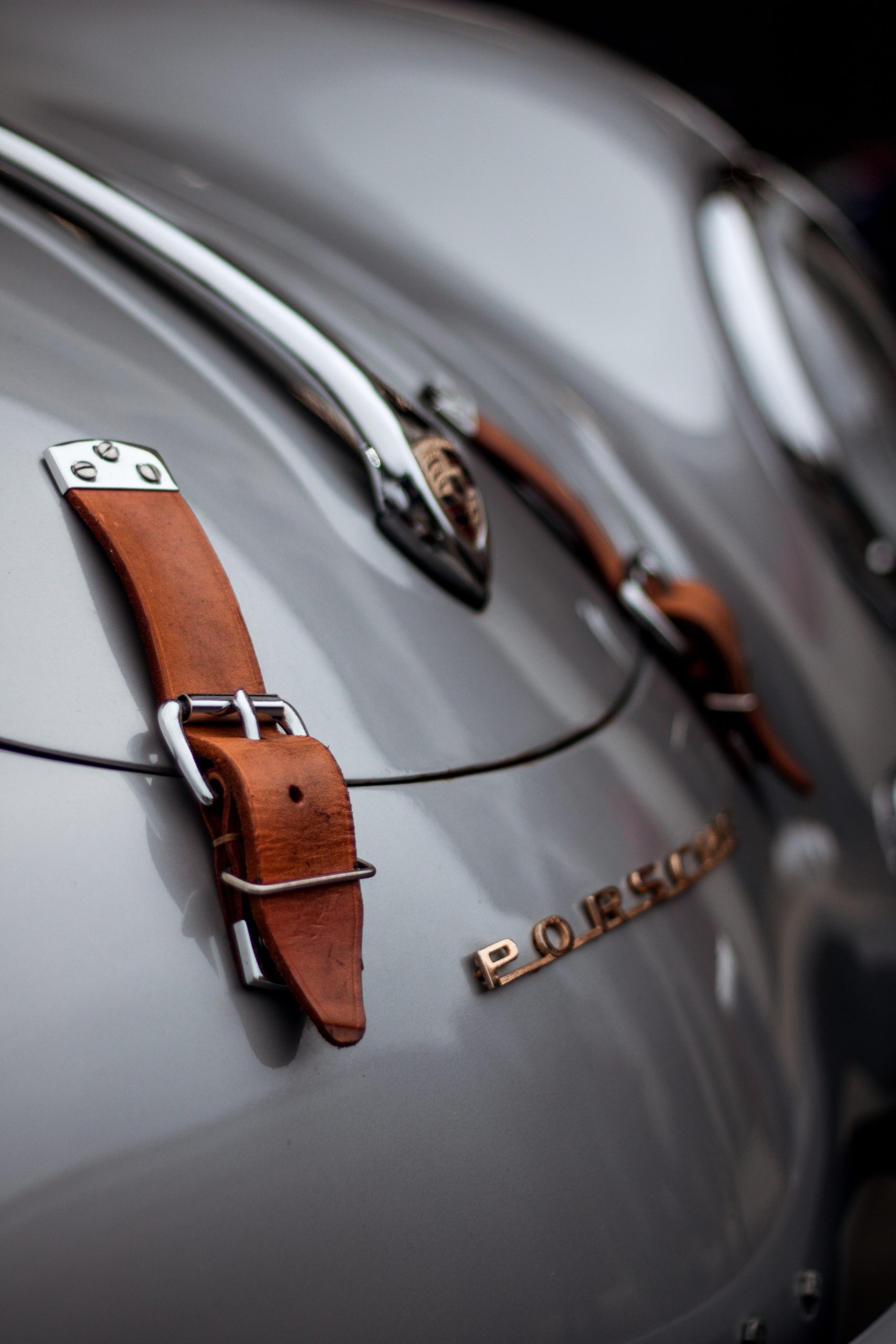372 results for
gt2 rs
Matt Prior from Autocar nails the 991.2 GT3 RS: “While I don’t think the 3 communicates any better than a 2, the messages it does transmit are superior: you can feel that it’s lighter, more willing to turn, easier and more satisfying to ease onto the throttle and keep it pinned. It’s why this car is only a few seconds slower than a 2RS around the Nürburgring Nordschleife despite being almost 200bhp down.” He goes on... “And in the form of the GT3 RS it goes into creating - little by little, detail by detail - what might just be the best driver’s car currently on sale.”
1987 model 911 Carrera 3.2 Club Sport Coupé The 911 Carrera Club Sport was Porsche’s attempt at rolling back the...
The All Time Greats – 70 Best Porsches of All Time (Ultimate List) Clearly we have been a bit of...
https://www.youtube.com/watch?v=65jW-FVAd2o This week, a road legal 911 GT3 RS set a lap time of 6:56.4 minutes with the 520-hp race-bread...
Definitive List of the Best Racing Cars Porsche Has Ever Raced Porsche Race Cars Porsche 917 Porsche 550 Spyder Porsche...
Porsche has made a lot of cracking 911s over 50+ years. We Pick the Best Production, Limited Edition & Race...
To the untrained eye, the Carrera T may appear to be a bare-bones and sparingly equipped 911 at first glance. The purpose of the T is to create a driver-focused 911, equipped with only the necessities required to appeal to those of a purist’s ilk. The Carrera T employs the same power plant used in the current base Carrera - a twin-turbocharged 3.0L flat-six with 370 horsepower and 331 lb-ft of torque. A 7-speed manual transmission comes standard with the T, along with a shorter final-drive ratio and the limited-slip differential. Porsche Sport Exhaust (PSE) is also standard. PASM sport suspension comes standard in the T, which lowers the chassis by 0.4 inches relative to the base Carrera and allows for two modes of dampening.
A Thorough Review of the 991.2 GT3 RS The 991.2 GT3 Rs comes with a power upgrade to the 911...
Nürburgring-Nordschleife, 16 April 2018: Porsche works driver, Kevin Estre, sets a new lap record for a roadgoing sports car of...
Donington Park Circuit, 11 April 2017: Porsche 911 GT3 RSR (chassis #WP0ZZZ99Z9S799918) is off-loaded It was a clear day in...
Review Summary: With a fuel efficient V6 engine, the midsize SUV offering from Porsche has a great interior design, with...
Over 350 Cars! We Compiled the Porsche Performance Numbers & Specs for Every Porsche What’s Here 911 Models Porsche 911...
Philippe Alméras is the owner of Team Martinet by Alméras, one of the main Porsche team contenders in the 2017...
The new Porsche 911 GT3 carries the same four-litre flat engine from the GT3 RS with its power increased by 25hp for a new total of 500hp. The chassis is also redesigned and now features a rear-axle steering and a lighter construction. The Porsche 911 GT3 type 991.2 comes in at 1,430 kg when its tank is full. Although it is a bit heavier than the previous model, it still manages to reach 0-100km/h in just 3.4 seconds and reach top speeds of 318km/h. What’s more interesting here is that Porsche finally decided to switch back to a 6-speed manual gearbox (7-speed PDK is standard).
The Seikel Motorsport team last raced in the 2007 Le Mans, having participated on no less than eleven occasions in...
Ultimately, the Carrera 4 GTS is the ideal all-round 911. Its bag of tricks gives you accessible, astonishing performance on the right road – but its price tag and comfort levels make it a little more acceptable for everyday use than a GT2, GT3 or Turbo. The GTS scores particularly well on the practicality to performance ratio. Its rear seats can accommodate people and its all-wheel drive system means you can really use this car all-year round. The GTS-spec 3.0-litre flat-six develops 30bhp more than a Carrera S (at 444bhp) and 37lb ft more torque (at 406lb ft).
A Must-Have Car For All People Who Just Love to Drive, the “Porsche 911 GT3 RS” If Lamborghinis are meant...
Onboard Video of Porsche 911 GT3 RS 4.0 on Nürburgring Nordschleife The 911 GT3 RS 4.0, launched in 2011, was the...
This is the best 911 Porsche has ever made. The headline power figure and the ability to rev to 8,500 snare your attention, but the most staggering aspect of this engine is actually its tractability. Mid-range lunge is marvelous, even if the peak number of 339 pound-feet doesn't sound huge in the context of short gear ratios, lightweight, and a compact frontal area. In third gear, the way this thing flies between 4,500 and 8,500 rpm is scintillating. Plus, the utter progression of the delivery makes it vastly easier to take advantage of compared to the GT2's ridiculous turbo surge. This is one special car.
Based on the 911 GT3 RS production sports car, Porsche has designed a customer sport race car for GT3 series around the world: The 911 GT3 R. In developing the more than 368 kW (500 hp) racing nine-eleven, special attention was paid to lightweight design, better aerodynamic efficiency, reducing consumption, improved handling and optimised safety. The 911 GT3 R features the distinctive double-bubble roof, and the wheelbase which had been lengthened compared to the prior generation.
2009 Gemballa Avalanche Roadster GTR 650 EVO-RS As unique car, the EVO-RS is Gemballa’s most potent looking roadster. Based off...
The 993 Carrera RS Clubsport, 213 of which were built to meet the FIA GT2 homologation requirements, is a race-ready, although street legal variant of the 993 Carrera RS, not to be confused with the track only 993 Carrera Cup RSR. Emphasizing its competition credentials, the 993 Carrera RS Clubsport came with a welded-in roll cage as standard, considerably increasing its rigidity, racing bucket seats, six-point safety harnesses, battery isolator switch, fire extinguisher, and a huge fixed rear wing, the latter also available on the 'base model' Carrera RS.
The 2014 Porsche 911 Turbo is a technological extravaganza. Adaptive aerodynamics, four-wheel steering, torque vectoring, active four-wheel drive, adaptive dampers, launch control, twin-clutch automatic gearbox – you get the picture. This is the first time we've had a chance to sample all of this on British roads. Two versions are available; both are powered by an uprated version of the previous 911 Turbo's 3.8-litre twin-turbo flat-six engine. The new 911 Turbo has even more power and more electronic systems. It is still a straight-line monster that will blow you away in terms of the sheer might of that engine and traction.
The 993 Carrera RS is a lightweight, stiffer version of the naturally-aspirated 993 Carrera meant for ultimate street performance. At its heart was the 3.8-liter normally aspirated Type M64/20 engine producing 300 bhp at 6,500 rpm along with 262 foot-pounds of torque at 5,400 rpm. Looking to save as much weight as possible, every non-essential item from the car was removed. The Carrera RS tipped the scales at a 1,280 kg. About 1,000 Carrera RS were built, making it one of the rarest and most collectable 993-generation 911's produced. In addition to the Base Trim it was also available as the race-ready, street legal, RS Clubsport (option M003).
Porsche offered the 991 Turbo S from the start of the production of the 991 Turbo. The unique features of the Turbo S were the GT3 mirrors, slightly different front spoiler grilles and interior features. As before, the Turbo S was a heavily equipped version of the Turbo. The powerkit added 29 KW of power and the following equipment came as standard: PDCC hydraulic rollbar system, Sport Chrono (Launch control and 0.15 bar overboost functions), dynamic engine mounts, PCCB Porsche Ceramic Composite Brakes, central lock wheels, full LED dynamic headlights, 18-way Sport Plus seats with memory.
As the rules do not permit higher output engines, the engine for the 991 RSR was taken from the 997 GT3 RSR 4.0 and the development work focused on the chassis, body, aerodynamics and the gearbox. A wishbone front suspension replaced the McPherson struts used in 997. A new development was the lightweight gearbox. One of the priorities in the development was the more evenly balanced weight distribution. The centre of gravity was lower, too.
Porsche 918 Spyder Prototype is a combo of mis-matched Porsche parts that looks more like a Frankenstein car than a cutting edge technical automotive marvel. But don't let the crazy exterior fool you because underneath, the 918 Spyder Prototyp is a pure science experiment designed to wow us in a few years.
Porsche 911 GT2 RS Top Gear Review The team takes the Porsche 911 GT2 RS around the closed streets of...
To a large extent, the 3.6-litre boxer engine is identical to the power unit used in the Porsche Mobil1 Supercup and the international Carrera Cup championships. Power output has increased by 20 horsepower to now 440 hp (324 kW) at 8,000 rpm. Maximum torque is up by ten Nm to 430 at 7,250 revs per minute. The power increase results from optimised engine electronics and a modified exhaust system. In contrast to the GT3 Cup, the body of the Cup S is not based on the road-going GT3 but on the GT3 RS.
Porsche has announced the introduction of the new 2007 911 GT3 RSR (type 997) for the American Le Mans Series and other world GT racing venues. The latest version of the most successful racing sports car in history is based on the street production model 911 GT3 RS (model year 2007) and was launched in late 2006. The 911 GT3 RSR has wider rear fenders and rear track to improve performance capabilities over its predecessor. The car has also been developed to fit into the 1,225 kg class. The new car is built in accordance with the ACO LMGT2 Regulations and the FIA Article 257.
The Porsche 997 GT3 Cup was a series of race cars created by Porsche to enter the Fédération Internationale de l’Automobile (FIA) Group GT3 racing class. Replacing the 996 GT3 Cup, the 997 Cup's 3.6 litre engine is rated at 294 kW (400 PS; 394 hp) and was mated to a six-speed sequential transmission. In 2009, the GT3 Cup received several 997.2 updates including a new 3.8 litre engine with an output of 331 kW (450 PS; 444 hp).
In the 2000 FIA GT Championship, the 996 GT3 R was the dominant racer in the new N-GT class and won every run. In the same year, the factory-supported Phoenix Racing won the 24-hour race at the Nürburgring. In 2001, the modified version, now called the 996 GT3 RS, was used. The vehicle was not only very successful in its class, it also achieved overall victories. Modelled on the 911 GT3 R, the GT3 RS race cars offered a number of technical improvements, which combine to ensure a racing car with optimal competitiveness. 50 racing cars were produced.
The 996 GT3 R was a one-year-only (2000 model year) special of which only 63 were produced. The car took the basic GT3 bones and amplified it for motorsport. The Mezger engine produced over 400 horsepower, while factory-fitted adjustable shock absorbers gave better handling. Most notably, the GT3 R wore carbon-fiber bodywork meant for ultimate light weight in motorsport. The 996 GT3 R was introduced in 1999 as a replacement for the 993 RSR. Before its introduction, it was extensively tested at Weissach and Paul Ricard. In the 2000 FIA GT Championship, the 996 GT3 R was in the N-GT class and won every run. Won the 24-hour race at the Nürburgring.
The 993 Carrera RSR takes the 993 Carrera RS formula and makes it even more track-ready by adding a roll-cage and removing carpet, power windows, and a/c. There were just thirty Porsche 911 Cup 3.8 RSR (Type 993) race cars produced for the 1997 season. This model was the last of the breed of air-cooled, naturally-aspirated 911 race cars to come from the Weissach race department before the introduction of the Type 996 water-cooled cars. To find a 993 3.8 RSR that participated in some of the world’s toughest endurance races in period, and survived unscathed and unmolested, is quite rare.
In spite of its 911 moniker, the car actually had very little in common with the 911 of the time, only sharing the front and rear headlamps with the production sports car. Designed and developed to compete in the GT1 class of sportscar racing, which also required a street-legal version for homologation purposes. It was powered by a twin-turbo flat 6 that was good for 600 bhp. The 1996 911 GT1 clocked at a top speed of exactly 330 km/h (205 mph) on the legendary Mulsanne Straight.
The 993 Carrera Cup 3.8 was developed from the 993 Carrera RS, as purpose-built competition car designed by Porsche for its single-model racing series taking place around the world. Replacing the 964 Carrera Cup, the 993 Carrera Cup had a claimed 315 bhp on tap, weighed only 1,100kg, and offered a top speed of around 270km/h (170mph). Approximately 216 samples were built. The Carrera Cup should not be confused witth the Carrera RSR, or the 993 Carrera RS Clubsport version.
Race to the clouds The Brumos Collection and Brumos Racing announced today that they will compete for the second straight...
Stunning Porsche 993 ‘GT2 RS’ by Guntherwerks Gunther Werks, the company that remasters the Porsche air-cooled 993 just announced their...
Mark Webber being interviewed at the Geneva Motor Show 2014, on the occasion of the world debut of the Porsche...
Mark Webber ahead of his first competitive drive in the Porsche 919 Hybrid at the 2014 Silverstone 6-Hour race on...
Mark Webber, Porsche driver, Silverstone 6h 2014 Born: 27th August 1976 Where: Queanbeyan, Australia Lives: Buckinghamshire, UK Height/weight: 1.83 m/76...
1996 Gemballa 911 GTR 600 At their London Motorcar Sale, RM Auctions sold this Gemballa Turbo. Their catalogues described the...
You already read about our preview of The White Collection auction here on Stuttcars. Fifty-five Porsches, mostly in white, with...
Sorry, but you do not have permission to view this content....
Kaege Restomods Based Germany, Kaege Retro had been creating 993-based cars since 2010. When Roger Kaege decided to build his...
The Auburn Auction, hosted by Worldwide Auctioneers from September 1 to 3, 2022, is just over a week away, and...
Paul Stephens’ latest Autoart customer only gave him one directive, “Take a 993 and make a 25 per cent improvement...
DBR 9 – The Definitive History by Christoph Mäder and Thomas Gruber © T.A.G. Motor Books GmbH At Porsche Road...
Spa 24-Hour, 2 August 2008: The #160 Prospeed Competition Porsche 997 GT3 Cup S was driven by David Loix (B)/David...
Rennsport Collective, Donington Hall, 20 July 2019: Porsche 996 GT1 Evo 1997 on display with numerous other Porsche classics They...
Norbert Singer, 24 Hours of Le Mans, 1996 Norbert Singer must rank as one of the most successful race engineers...
Richard Lietz, Porsche works driver, Le Mans 24H, 2016 Born: 17 December 1983 Where: Waidhofen, Austria Lives: Ybbsitz, Austria Marital...
Timo Bernhard, Porsche works driver, Le Mans 24H, 2016 Born: 24 February 1981 Where: Homburg/Saar (Germany) Lives: Bruchmühlbach-Miesau (Germany) Marital...
Jörg Bergmeister, Porsche works driver, 2016 Le Mans 24H Born: 13 February 1976 Where: Leverkusen, Germany Lives: Langenfeld, Germany Marital...
Romain Dumas, Porsche works driver, Le Mans 24H, 2016 Born: 14th December 1977 Where: Alès, France Lives: Basel, Switzerland Marital...
Born: 25 May 1981 Where: Hannover, Germany Lives: Würzburg, Germany Height: 1.80m Career 2017 Porsche works driver, 2nd Daytona 24...
Autograph card signed by Jürgen Barth (ca. 1980) More books have been written about Porsche than any other car company...
Born: 5 April 1975 Where: Nürtingen, Germany Lives: Nürtingen, Germany Marital status: Married, 2 children Height/Weight: 1.74 m/69 kg Hobbies:...
Patrick Pilet, Porsche driver of #92, at the Silverstone 6h, 10 – 12 April 2015 Born: 8 October 1981 Where:...
Marc Lieb, Porsche works driver, Le Mans 24H, 2016 Born: 4th July 1980 Where: Stuttgart, Germany Lives: Ludwigsburg, Germany Marital...
Fred Makowiecki, Porsche works driver, 2016 Le Mans 24H Born: 22 November 1980 Where: Arras, France Lives: Perpignan, France Marital...
2005 PSI CS400 CS400 is PSI’s first tuning project for the 997 Porsche and the car that will introduce the...
2003 TechArt GT Street S Maximum performance combined with optimum lightweight: TechArt Automobildesign offers one of the world’s most powerful...
2010 TechArt GrandGT Based on the Porsche Panamera, the TECHART GrandGT combines all of the features, for which TECHART is...
2002 Gemballa 911 GTR 650 For 2002 it looks like Porsche tuner, Uwe Gemballa, has tweaked his ulitmate creation, the...
No More Content


